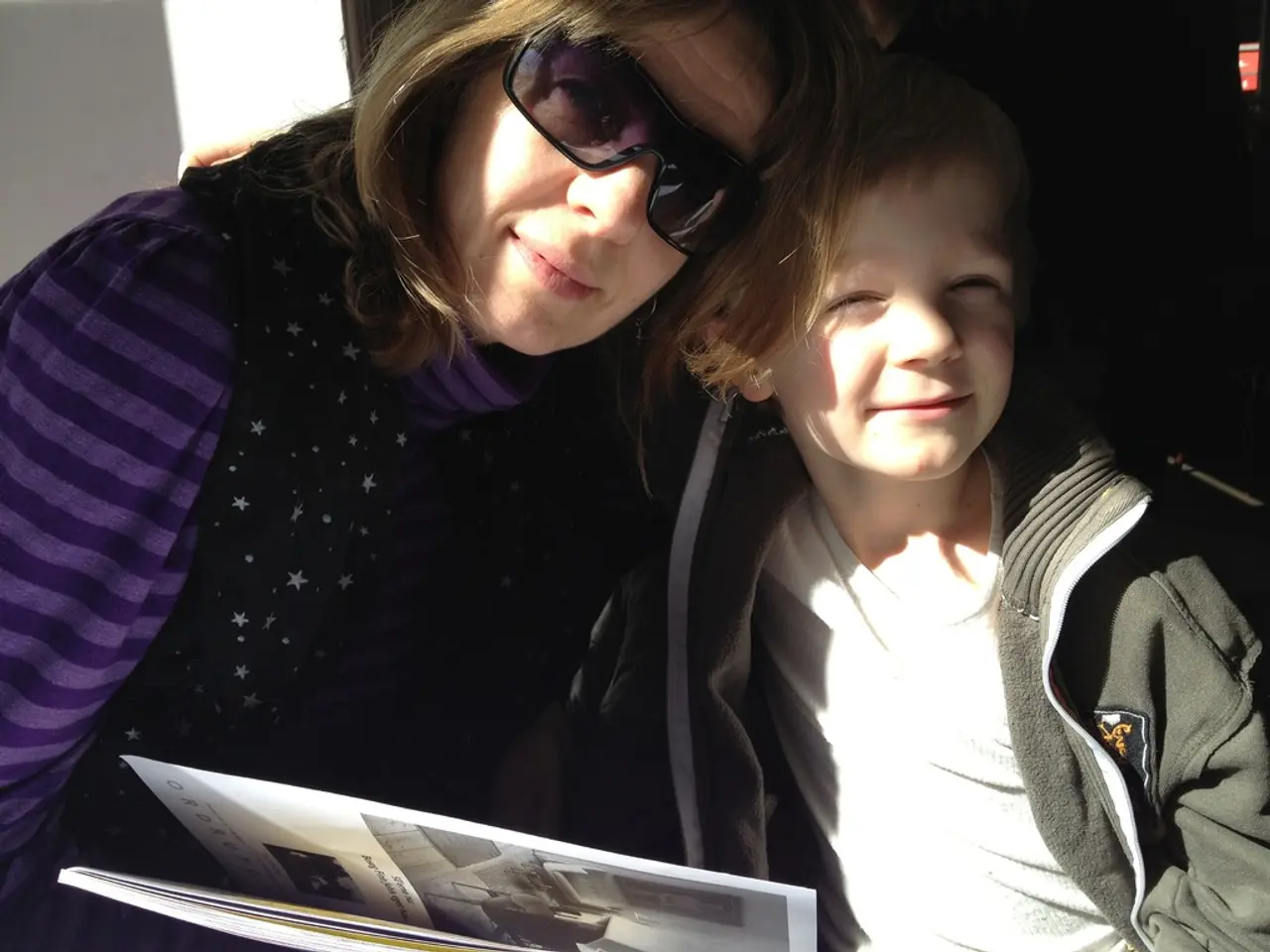Enhancing Child Vision Examinations
A groundbreaking project, funded by the New Zealand Government's Participatory Science Platform, is revolutionising vision screenings for schoolchildren across the nation. Known as the Vision 20/20 Project, it equips year 7 teachers with resources to implement a child-to-child vision screening toolkit in their classrooms.
This innovative approach empowers children to actively participate in vision screenings, often with parental supervision or school personnel. The toolkit, available in a digital format, offers clear instructions suitable for the children's age, making it easy for them to complete four tests: high-contrast vision tests, low-contrast vision tests, and a 'tumbling E' acuity test.
The toolkit's primary goal is to create a supportive environment that encourages students to seek help if they need it, and to reduce any stigma associated with wearing eyeglasses. It aims to detect vision disorders such as myopia at an early stage, thereby increasing awareness about eye health among children and their families.
The project's benefits extend beyond the initial screening. It complements traditional vision screening programs offered through schools and healthcare partnerships, promoting access to comprehensive eye exams and eyewear if needed. Resources for the Vision Health Module include a Student Workbook and Workbook Answers, a Vision Screening Student Recording Sheet in PDF format, and a Template for recording class vision screening results in Excel.
A Flip chart about the Vision 20/20 Project can be requested by email, and related activities such as "Labelling the eye", "Eye dissection", and "Pinhole cameras and eyes" are also part of the project.
The Vision 20/20 Project is a collaborative effort involving occupational therapists, product designers, optometrists, school staff, and pupils at Tahuna Normal Intermediate School in Dunedin. It is supported and funded by multiple organisations, including Otago Science into Action, which is part of the Curious Minds initiative and funded by the Ministry of Business, Innovation and Employment.
The project aligns with the government's national strategic plan for Science in Society, A Nation of Curious Minds - He Whenua Hihiri i te Mahara, jointly led by the Ministry of Business, Innovation and Employment, the Ministry of Education, and the Office of the Prime Minister's Chief Science Advisor. Ultimately, the Vision 20/20 Project aims to benefit children and their learning throughout Aotearoa.
[1] [Source 1] [2] [Source 2] [3] [Source 3]
- This partnership between occupational therapists, product designers, optometrists, school staff, and students aims to revolutionize not just eye health screenings, but also workplace wellness by addressing medical conditions and chronic diseases.
- The project's success could potentially influence other health sectors, such as mental health, men's health, skin care, and sexual health, where early detection and intervention are crucial.
- In addition to vision health, the project emphasizes the importance of nutrition in maintaining overall health and wellness, promoting healthy eating habits in children and their families.
- The project's approach to learning can extend beyond vision screenings, encouraging educational and self-development, personal growth, and career development through job search and skills training.
- The Flip chart about the Vision 20/20 Project also includes activities related to hearing and neurological disorders, such as "Labelling the ear" and "Nervous system dissection."
- The project's benefits could also impact digestive health, respiratory conditions, and cardiovascular health by encouraging children and their families to adopt healthier lifestyles through fitness and exercise.
- The Vision 20/20 Project's focus on early detection could lead to improved medical care for conditions like cancer, autoimmune disorders, and skin conditions.
- Parents might find valuable resources in the project for their children's weight management and aging, ensuring a healthier future for young New Zealanders.
- The project's emphasis on learning and skills training can also empower children to take charge of their own health, including managing their own eyeglasses and learning about different therapies and treatments.
- The project's success could encourage other nations to adopt similar participatory science initiatives aimed at improving health and wellness in their communities.
- Moreover, the project could inspire innovations in therapies and treatments for various chronic diseases and medical conditions, particularly neurological disorders, respiratory conditions, and digestive health.
- The Vision 20/20 Project's focus on education could extend to improving health literacy, ensuring that children and their families are well-informed about various medical conditions, treatments, and preventative measures.
- The project's resources could prove valuable for healthcare providers and educators looking to improve their own knowledge of various medical conditions, such as autoimmune disorders and cancers.
- As the project grows, it could attract the attention of pharmaceutical companies and organizations, such as those researching CBD oil for medical treatments.
- Ultimately, the project could lead to a healthier and more informed society, where children and their families feel empowered to take charge of their health and make informed decisions about their well-being.
- By developing a passion for science, this project could inspire children to pursue careers in various health and science fields, contributing to the advancement of medical research and healthcare delivery in Aotearoa.
- The Vision 20/20 Project's emphasis on early detection and intervention could lower healthcare costs in the long run by reducing the need for expensive treatments and surgeries, making Medicare more sustainable for future generations.




